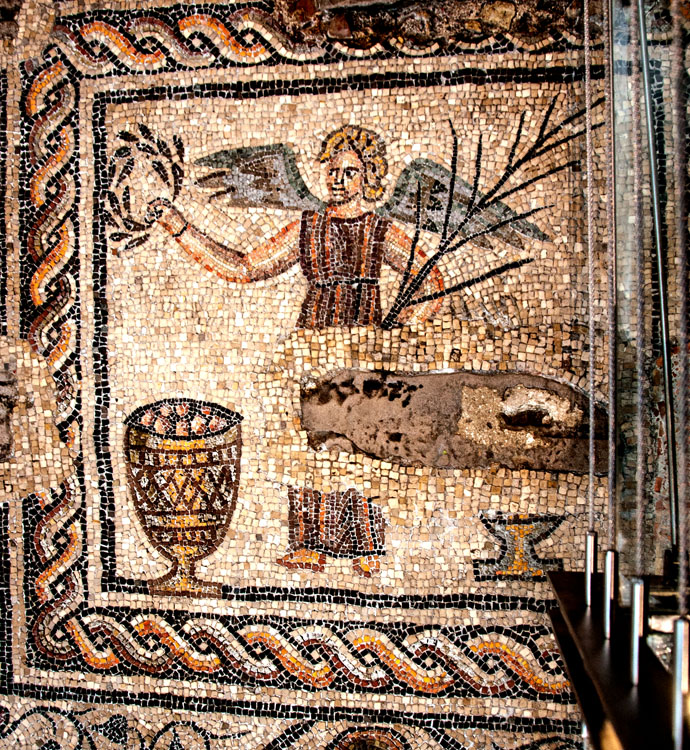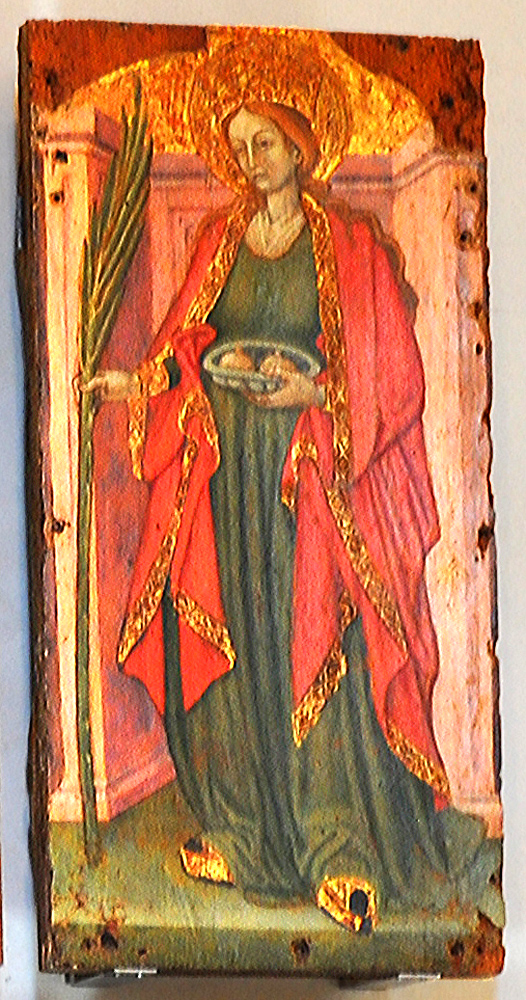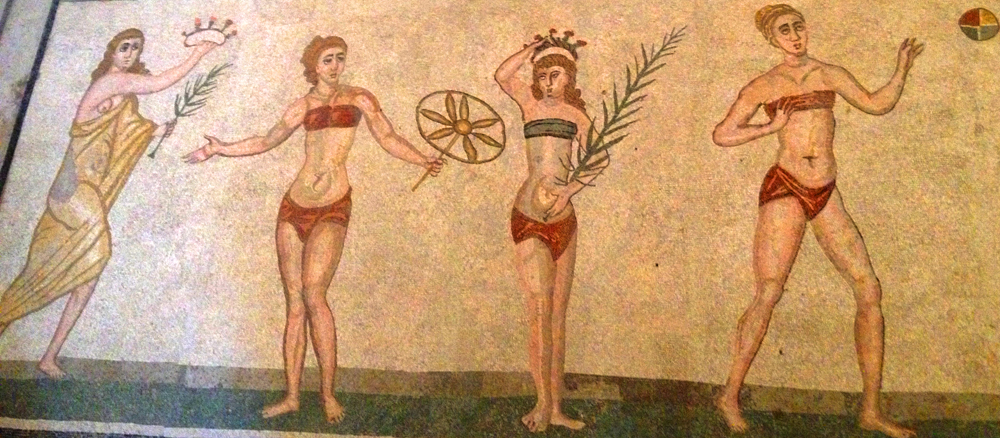In medieval and later art the palm branch became the symbol of choice for identifying martyrs, as in the second picture at right. In images of the martyr's death it was often paired with a crown, carried to the dying saint by winged figures comparable to the Victory of classical iconography (example). In the baroque era angels can bring the floral crown even to non-martyrs such as Teresa of Ávila (example).
In a parallel development early Christian art also conflated the crown of classical iconography with the golden crowns that the twenty-four elders throw down before the throne in Revelation 4:10. Thus in Ravenna's Sant'Apollinare Nuovo we see a procession of martyrs on each side of the nave bringing Christ their crowns, each crown a gold band encircled by a "wreath" of white petals. In subsequent Christian art it is common to give a female martyr a crown even if in life she had been a commoner. In late-medieval England this practice extended even to monumental brasses that middle-class families would commission for maidens who had died an early death.2
Prepared in 2015 by Richard Stracke, Emeritus Professor of English, Augusta University. Revised 2018-12-07.
Detail from the Villa Romana Coronation of the Winner mosaic (early 4th century). See the description page for the whole mosaic and a brief discussion.

This Christian floor mosaic from the 4th century uses a palm branch and laurel wreath to express the victory of those who die to sin in baptism. See the description page for a commentary on this image and those surrounding it.

St. Agatha with palm branch and crown in the Bellomo Palace's "Virgin Enthroned with Saints." See the description page for full size and more discussion.
MORE IMAGES
- 4th century B.C.: Detail from an amphora: Winged Victory awaits the outcome of a battle to award a floral crown to the victor. See the description page for the complete amphora and a brief discussion.
- 2nd century A.D.: In this detail from a pagan sarcophagus of the 2nd century, a winged Victory holds a palm branch.
- 1599-1600: In Caravaggio's Death of St. Matthew an angel reaches down from Heaven to hand the saint his prize.
NOTES
1 For example, I Corinthians 9:24-25, "Know you not that they that run in the race, all run indeed, but receiveth the prize? So run that you may obtain. And every one that striveth for the mastery, refraineth himself from all things: and they indeed that they may receive a corruptible crown; but we an incorruptible one." Also see Philippians 3:14 ("I press toward the mark for the prize") and 2:16, Galatians 2:2, and Hebrews 12:1.
2 Bennett, 278-79.
